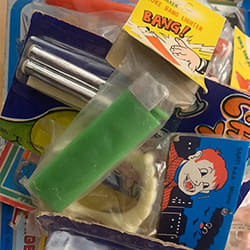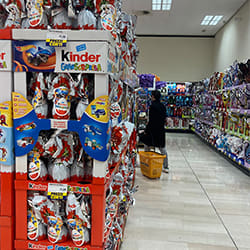Mantua is a town located in the southeastern part of the Lombardy region of northern Italy. It has been designated as a UNESCO World Heritage Site. Three artificial lakes were constructed next to the town in the 12th century, and the lakes are spanned by three bridges. Mantua has a powerful presence that belies its small population of just 40,000 people.
Its power is due to the patronage of the House of Gonzaga for four centuries between 1300 and 1700 or so. The House of Gonzaga also founded the town of Sabbioneta as a utopian settlement just thirty kilometers away from Mantua. The success of their venture still lives on today.
Throughout history, many great houses have been torn apart by war, resulting in their catastrophic collapse. But the fall of the House of Gonzaga was different. The last head of the family left no heirs, but upon his death the family’s holdings were annexed by the Duchy of Milan—which may be why the Palazzo Ducale, Palazzo del Te, and other important Gonzaga sites have been preserved in such good condition. Their frescos in particular are a must-see. The House of Gonzaga put a lot of work into city planning, and you can enjoy the fruit of their efforts by strolling through the ruins of their cities.
When I first learned of the Palazzo del Te, I wondered whether it might have been named after the Italian word for tea (te). But it turns out that “Te” is short for “Tejeto,” which is the name of the island in one of the artificial lakes on which the palace was originally constructed. That lake later got filled in for some reason, which is why there are three instead of four today.
The Palazzo del Te was built for Frederico II Gozonga, who headed the family in the early 1500s. It was ostensibly meant to serve as a summer villa and guest house, but Frederico II actually had it constructed for a lover.
To tell the truth, I went to check it out without doing any research in advance.
Hmmm, so Frederico II Gozonga recognized the talent and ability of master designer and architect Giulio Romano and commissioned him to construct the palace and design the city. Thus began the description of the palace as we started out on our tour, but we were then immediately thrust into the mannerist world of Giulio Romano.
As you enter the palace, the Hall of the Horses—an incredibly unconventional room considered unique in all the world, awaits you. Its walls are covered in horses. Important ceremonies were conducted in the hall, painted with the thoroughbreds that I suppose Frederico II was passionate about. It’s a strange design that you won’t see anywhere else.

I hadn’t studied anything about the palace before visiting, so the main hall, known as the Chamber of the Giants, was much more shocking to see. The walls are covered in a single painting from floor to ceiling. The images are dynamic and energetic, making you feel like you’re being swallowed whole.

My visit to Mantua has only just begun, but it feels pregnant with potential. I’ll share more in my next post!




























































